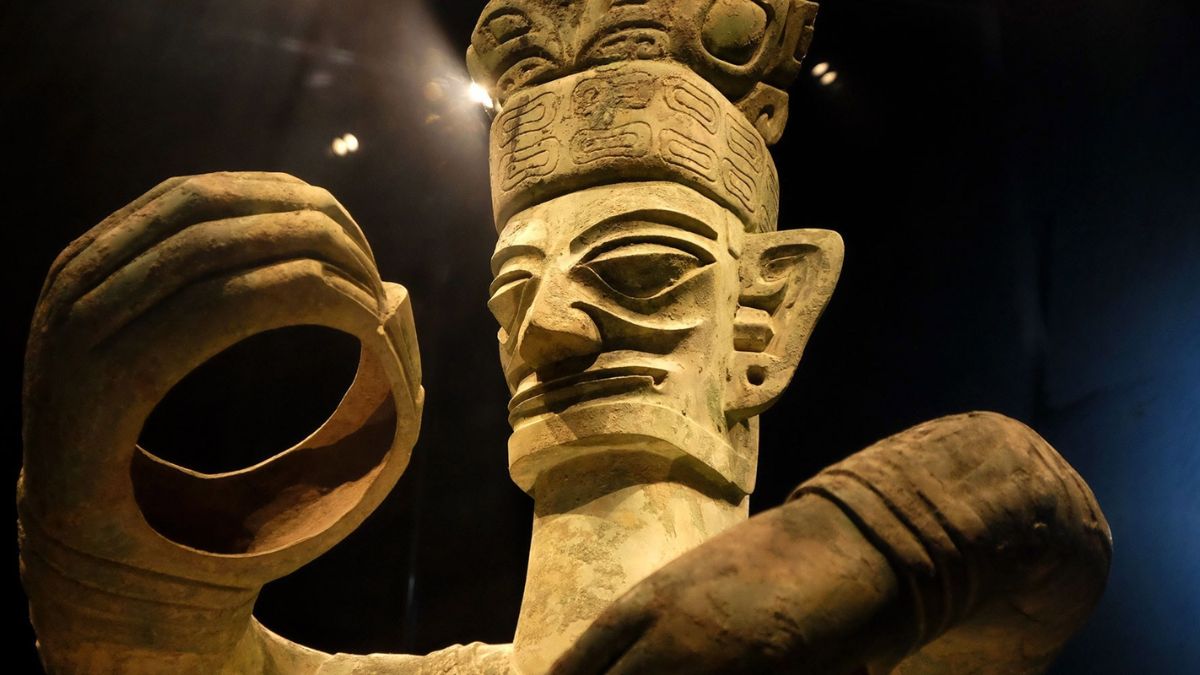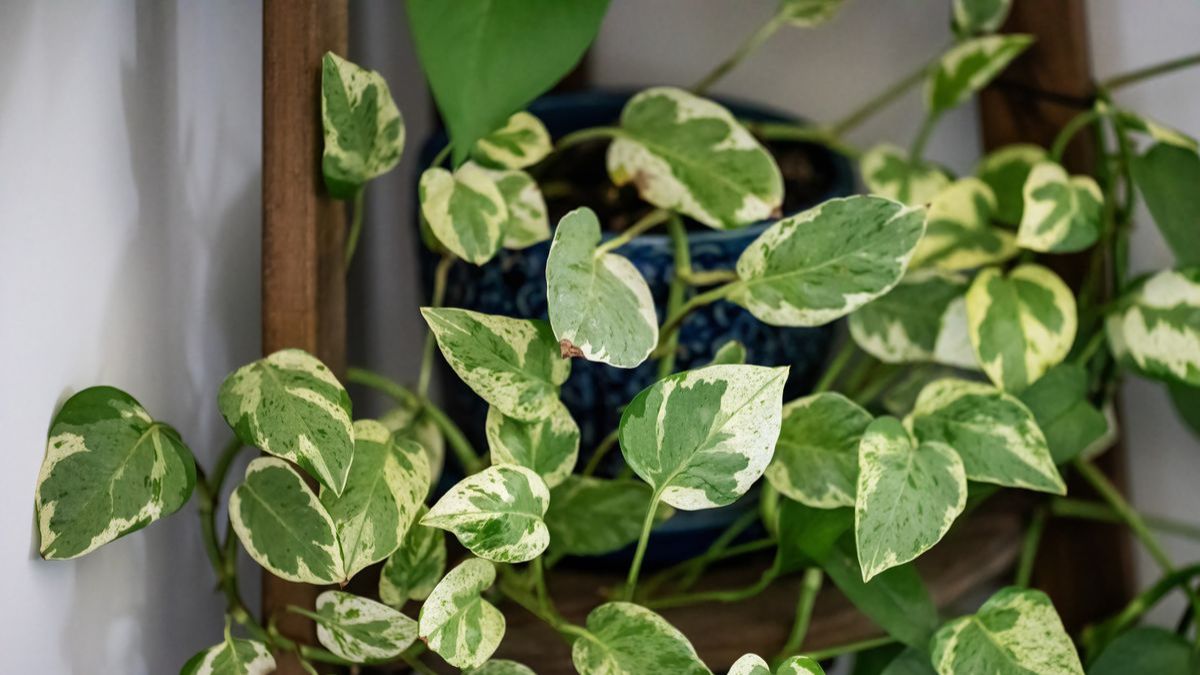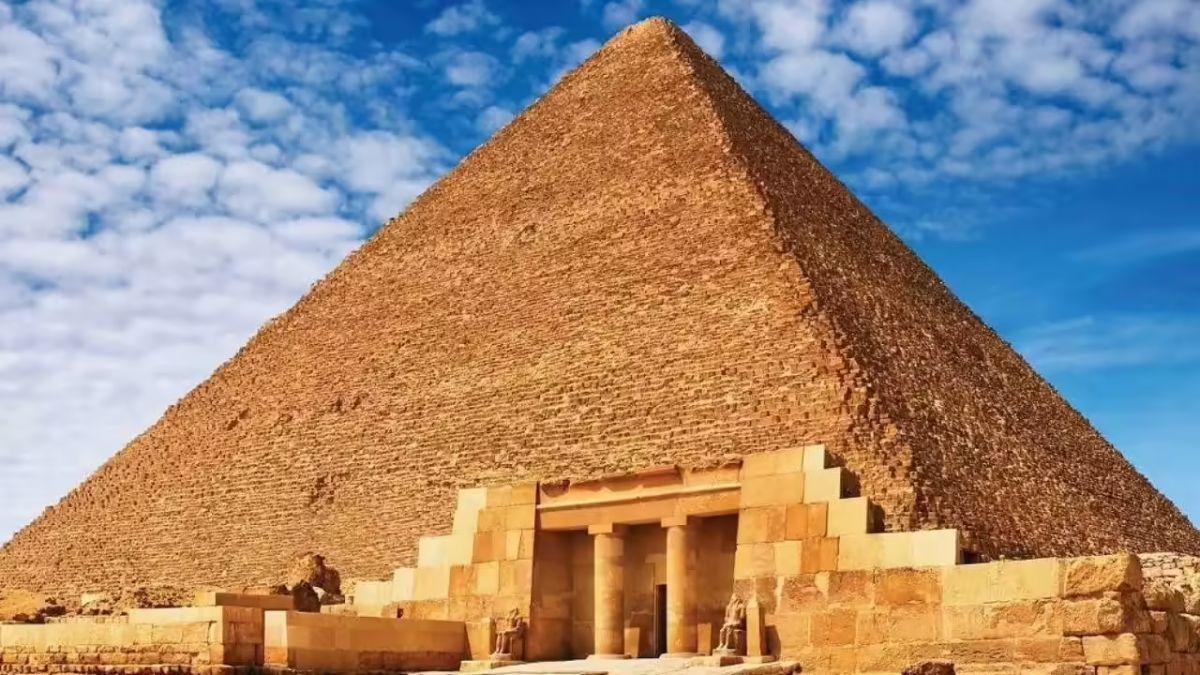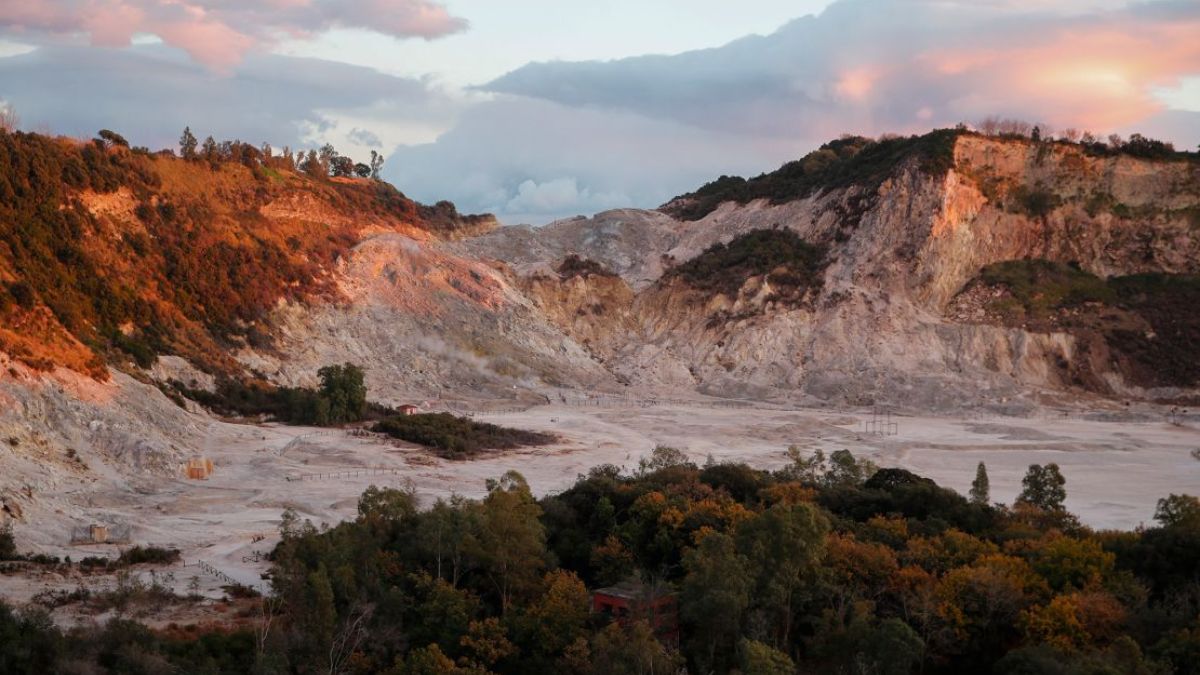In the misty lands of Sichuan, China, a lost kingdom has remained hidden for thousands of years. While dynasties rose and fell elsewhere, the Kingdom of Shu was quietly buried beneath the soil, forgotten by history. That is, until a series of astonishing archaeological discoveries brought it roaring back into the spotlight.
What researchers have found goes far beyond what anyone expected: bronze masks with wide, staring eyes, towering mythological trees, intricate golden sceptres, and mysterious sculptures unlike anything seen in ancient China. The long-lost world of Shu is finally being revealed—and it’s dazzling.
Sanxingdui
The forgotten Kingdom of Shu was long considered a historical footnote—something vague and barely mentioned in ancient texts. That changed dramatically in 1929 when a local farmer near the Yazi River stumbled upon jade relics. Archaeologists began digging, and what they uncovered was a walled city from the Bronze Age, which they named Sanxingdui, or “Three Stars.” Located northeast of modern Chengdu, this city was unlike anything anyone expected.
Instead of ruins from a modest culture, they found a civilization rich in imagination and craftsmanship, its artifacts bursting with life and mystery.
Artistry
The art found at Sanxingdui is wildly different from anything produced by other ancient Chinese cultures, such as the Shang dynasty. Instead of geometric lines and restrained forms, the Shu artisans created bronze masks with exaggerated features—bulging eyes, wide ears, and strange smiles. They made gold sceptres etched with birds and fish, ivory carvings, and even a massive bronze tree standing four meters tall, decorated with mythical beasts.
One of the most fascinating parts? These sculptures weren’t cast as single pieces. They were created in parts and later assembled, like ancient LEGO—but made from bronze, jade, ivory, and dated back to 1200 B.C. Their creativity and skill were generations ahead of their time.
Workshop
Sanxingdui wasn’t just a city of wealth—it was a spiritual and artistic hub. In 2024, archaeologists discovered what appears to be a jade crafting area filled with ritual daggers, axes, and tools. They also unearthed wooden boxes, textile fragments, silk remains, and intricate jewels. It’s clear this wasn’t just a workshop for making luxury goods—it was also a sacred space.
The combination of high-value materials and evidence of ceremonies suggests that Sanxingdui functioned as both a place of production and a centre of ritual practice.
Discoveries
Over time, excavations have uncovered eight large pits in Sanxingdui, aligned in a pattern that suggests careful planning. These pits have yielded more than 17,000 ancient objects—an absolutely staggering number for a single site. And many of these treasures are in excellent condition.
Among the most iconic discoveries:
- A divine figure with bird legs, possibly representing a sky deity
- A bronze vessel used in ceremonies
- A priest figure holding a dragon-shaped staff, reassembled from fragments found in multiple pits
These pieces paint a vivid picture of a complex worldview filled with gods, spirits, and ritual symbolism.
Mystery
So what happened to this magnificent civilization?
We still don’t know. Based on carbon dating and historical clues, archaeologists estimate the sacrificial pits were created between 1100 and 1050 B.C. Around that time, the Shang dynasty was in conflict with the rising Zhou, and it’s believed that war or internal power struggles may have led to the city’s sudden collapse.
Some theories suggest that the region was ruled by two major powers vying for control, and in the chaos, Sanxingdui was abandoned, its treasures buried in ritual pits and left behind.
Writing
Here’s something even more puzzling: no writing has been found. Despite the incredible sophistication of their society, there are no surviving inscriptions or texts. It’s believed that if the Shu people did write, they may have used silk, wood, or other organic materials that didn’t survive over time.
But even without writing, their art speaks volumes. Through their sculptures, masks, and artifacts, we learn that they were highly spiritual, deeply creative, and incredibly advanced. They were unlike anything we had imagined in early Chinese history.
Sanxingdui reminds us just how much of our planet’s past is still buried beneath our feet—waiting to be rediscovered.
FAQs
What is Sanxingdui?
An ancient Bronze Age city in Sichuan, China.
What was found in Sanxingdui?
Over 17,000 artifacts like bronze masks and gold sceptres.
Did Sanxingdui have a writing system?
No written records have been found so far.
Why is Sanxingdui important?
It reveals a unique and advanced ancient Chinese culture.
What ended the Shu Kingdom?
Possibly war or internal power struggles.























